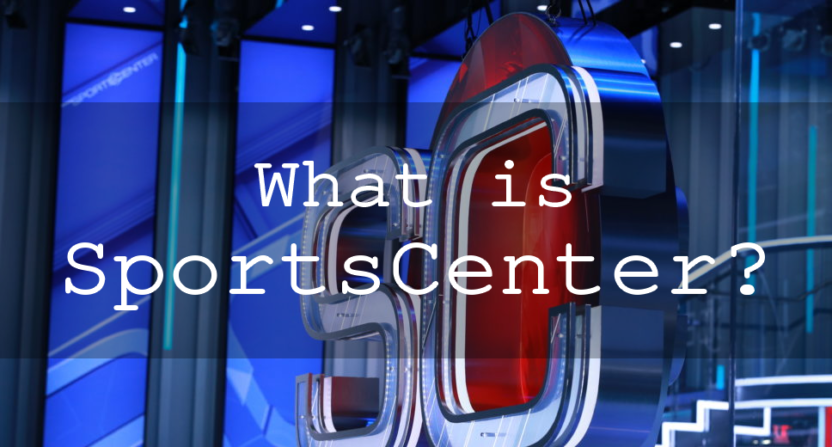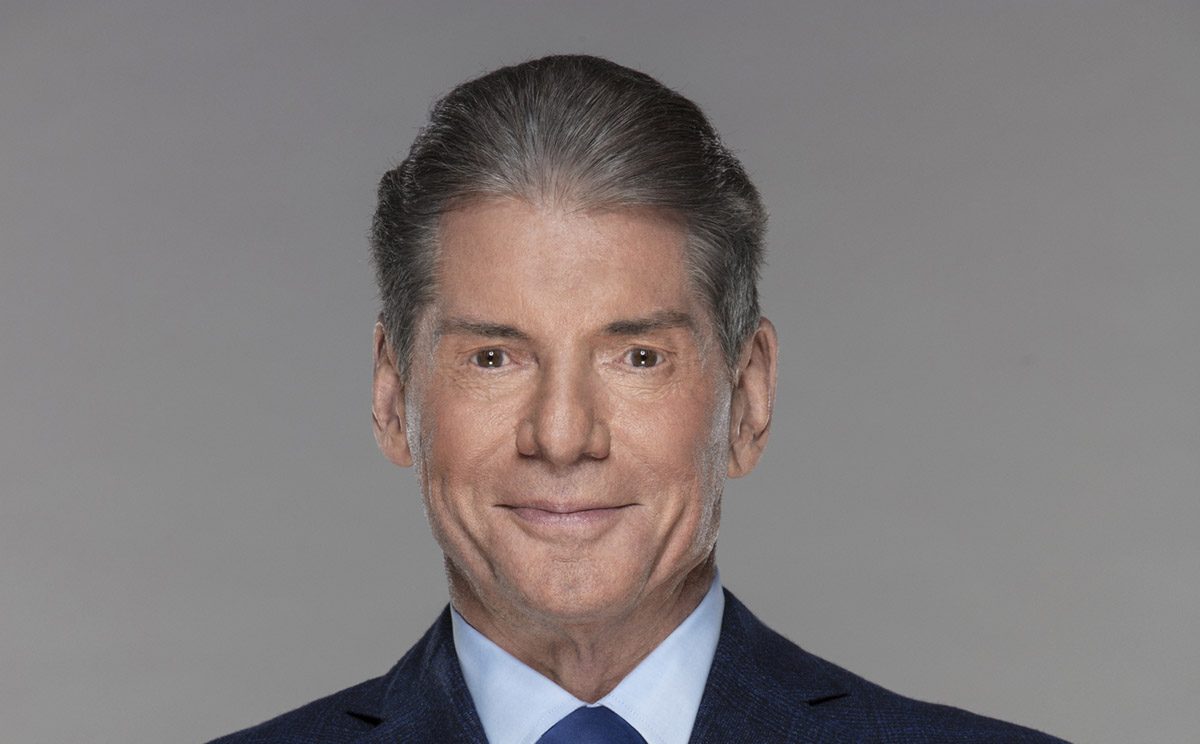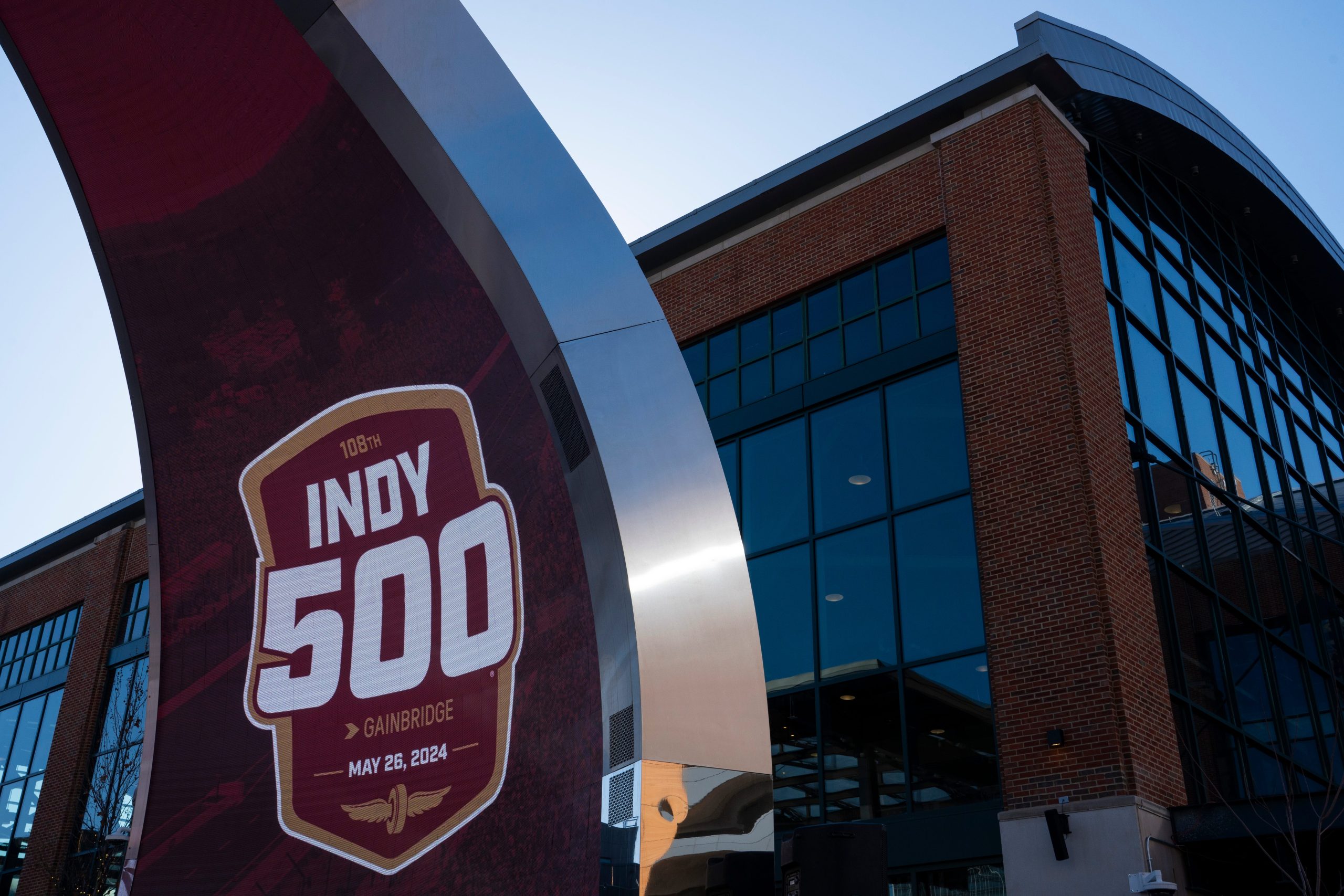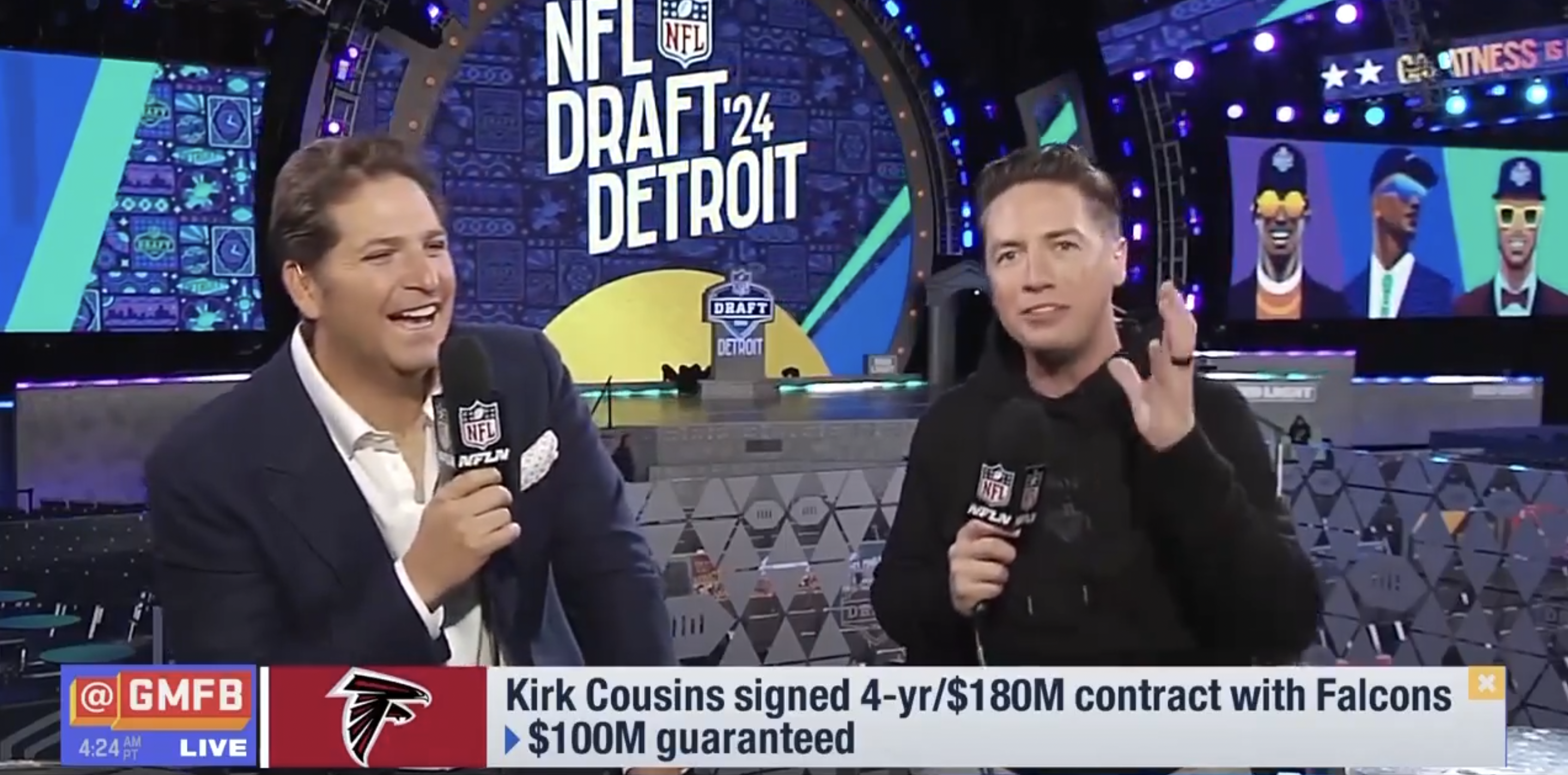The difference was apparent almost immediately. ESPN’s SC6 had been on air for eight months with an irreverent style centered on hosts Jemele Hill and Michael Smith’s chemistry and perspective. Now, within weeks of executive Norby Williamson assuming oversight of the SportsCenter franchise, the 6 p.m. show had changed entirely. A program known for being off-beat suddenly looked much like most other SportsCenter shows on ESPN airwaves, with wisecracking discussion replaced by traditional highlights and analysis.
Williamson was no stranger to SportsCenter, having served as a producer on the show throughout its 1990s heyday, so when an executive reorganization left him in charge last September, he had a distinct idea of what ESPN’s flagship franchise should look like. And just like that, SC6 turned sharply away from the talk-show concept it was largely founded on, toward a more straightforward highlight-centric model.
That shift, which eventually led to both Hill and Smith leaving SC6, marked the unofficial end of ESPN’s experiment in what the network had called “personality-driven” SportsCenter shows. Scott Van Pelt’s personalized midnight show remained, but otherwise SportsCenter had generally returned to being simply SportsCenter.
The changes were part of a broader initiative to restore SportsCenter, whose ratings have alternately dropped and stagnated in recent years, to its former place in the sports-media hierarchy.
“We have to make it a little more relevant,” Williamson told me in his Bristol office. “It was an unbelievable necessity, then things evolved. Now we need to try to restore a little bit the need of it, the relevance.”
Between Williamson’s takeover, the end of Hill and Smith on SC6, a painful round of layoffs and the ambitious launch of SportsCenter on Snapchat last November, ESPN’s most famous program is coming off a busy few months. But no matter how much has changed, the network still faces the same fundamental issue that inspired the personality-driven era to begin with: how to fit a show conceived four decades ago into an ever-changing 21st-century media landscape.
With SportsCenter, the network must placate both old-school fans who turn on the TV looking for scores, news and highlights, as well as younger audiences who see top plays on their phones minutes after they happen. To do that, ESPN is pivoting back to video — the network says SportsCenter currently features more of it than ever — while innovating in terms of what exactly that video looks like, on both linear TV and social media.
“We’re trying to create a net here that’s age 12 to 92,” Williamson said. “That’s what sports are, and that’s the offering of SportsCenter, and that’s the offering of our digital and our linear.”
How well SportsCenter strikes a balance between old and new could determine the long-term viability of the most sacred television franchise in sports.
Earlier this month, ESPN invited me to Bristol for an up-close look at a new era of SportsCenter. I visited the screening room where highlights are spotted and cut, stopped by the set of SportsCenter on Snapchat and spoke with executives and talent responsible for shaping the show.
Throughout my tour, I was told again and again about the network’s renewed devotion to video.
To many ESPN critics, the network erred when it began to abandon the highlight-show model that was so successful in the ‘90s and early ‘2000s. In a 2013 essay about SportsCenter’s lurch toward debate, Awful Announcing’s Ben Koo wrote that the show was “a shell of its former self.” Shortly after that, Sports Media Watch declared that SportsCenter was in freefall. “Over the years, the morning SportsCenter has become a plague of bombastic analysis, artificial debate, and whatever is racking up hits online,” Paulsen, the site’s editor, wrote. “Highlights take a backseat, unless they are used in the service of more debate.”
The latest
- Could NFL see next Saudi sportswashing controversy?
- ESPN and NBA have reportedly ‘essentially come to terms’ on deal that would keep Finals on ABC
- G/O Media sells The Onion to ‘Global Tetrahedron,’ ex-NBC reporter Ben Collins to serve as CEO
- Eli Gold on Alabama exit: ‘You can’t argue with city hall.’
Hill and Smith, who had hosted an afternoon show together for years, shared excellent chemistry and a distinct and compelling style. But as reporters turned talk-show hosts, they were also far removed from the SportsCenter-anchor tradition, and SC6 was immediately swamped with criticism. Some of the knocks were clearly disingenuous, informed by personal (and sometimes racially coded) animus toward the hosts. Others were more legitimate, as viewers who wanted scores and highlights bristled at a show full of banter and discussion.
“They did what they did and what they were good at,” Williamson recalled. “But I think the expectation level was a little tough, and the viewer reaction was, wait a minute, I used to get chocolate ice cream here, and now you’re serving me strawberry.”
Over the course of 2017, backlash to SC6 grew increasingly spirited, especially as Hill’s tweets about Donald Trump and later Jerry Jones made her Public Enemy No. 1 among right-wing ESPN critics. Meanwhile, the show’s ratings stayed flat, and ESPN executives began to feel they could get more from a high-stakes time slot sandwiched between well-rated afternoon talk shows and the network’s ever-essential live events. Soon after taking over SportsCenter, Williamson began stripping SC6 of the commentary that made it distinct.
Williamson emphasized to me that he doesn’t fault Hill and Smith for the demise of SC6. In his view, the network put the duo in a position to fail — or at least to not succeed — by allowing them to deviate too far from the formula viewers looked for in their time slot. Whereas Van Pelt’s show retained its SportsCenter roots, Williamson came to believe, SC6 had become too centered on its hosts.
“When we went with the Six we didn’t really do our due diligence there,” Williamson said. “I think it got away from us a bit with Michael and Jemele, Michael and Jemele, Michael and Jemele.”
In an email, Hill admitted that maybe she and Smith “hit the gas when we started the Six when perhaps we should have been going the speed limit,” but questioned the idea that their style was inherently less suitable to SportsCenter than Van Pelt’s.
“Scott Van Pelt had the advantage of being a longtime SportsCenter veteran, who was coming off live games and at a time slot where I think the viewer is a little more open to full-on personality,” Hill said. “He’s competing against Fallon, Kimmel and Colbert. In that time slot, you expect a little edge. Scott is an excellent broadcaster, but comparing our show to his is a bit of a misnomer.”
Maybe SC6 could have drawn stronger ratings if given more time. Maybe it would have worked better at another time of night. Regardless, the ESPN brass had made its decision. Personality on SportsCenter had gone too far.
In January, Hill asked off SC6, feeling that she was, as she puts it, a spread-option quarterback being asked to run a pro-style offense. Smith stayed on another five weeks or so before Williamson decided it was time for a different direction. In an interview on Jim Miller’s Origins podcast, Smith said the period after Williamson assumed control “frustrated the shit out of” him and Hill.
With Hill and Smith out, SC6 now features a rotating cast of hosts — including Matt Barrie, Michael Eaves, Kevin Negandhi, Elle Duncan, John Anderson, John Buccigross, Adnan Virk, and Linda Cohn — while the network figures out a more permanent arrangement. In most ways, it resembles any other SportsCenter show. In fact, when you look up and down the SportsCenter listings, you find little of the differentiation that defined the franchise’s last few years. Face to Face ended last spring, and Coast to Coast wrapped up months later, while SportsCenter:AM, which will move to ESPN2 next month, most of the time looks like a traditional highlight show.
As for Hill and Smith, the faces of the personality-driven era have moved on from SportsCenter. Williamson said he has had conversations with Smith about appearing on the network’s NFL Draft coverage or its NFL Live studio show, as he seeks the right role for the ex-anchor. Hill, meanwhile, now writes regularly for The Undefeated and appears on ESPN talk shows such as Around the Horn and Highly Questionable. She continues to take pride in what she accomplished on SC6.
“When my career is done, I can say, ‘Hey remember that time I hosted the 6 p.m. SportsCenter?’” she wrote in the email. “If that’s the worst thing on my resume, I had a pretty fucking awesome career.”
The personality-driven SportsCenter initiative might not have gone as planned for ESPN executives, but returning to a more traditional model carries risks as well. In its renewed focus on scores and highlights, SportsCenter must somehow avoid redundancy with the online world that many viewers traffic all day. With that in mind, Williamson said ESPN executives ask themselves the same question every day: “What can linear do that digital can’t?”
Heath Henry has seen more than a few strategy shifts at ESPN since joining the network as a researcher in 2001. He has served as a producer on Baseball Tonight, a lead producer on the 11 p.m. SportsCenter and a coordinating producer on the 6 p.m. SportsCenter, while also working on the concept that became SportsCenter:AM. He has witnessed up close SportsCenter’s shift from old-school highlight show to personality-centric talk show and back to what you might call a decked-out version of the original. Today, amid SportsCenter’s new direction, a large part of his job as the show’s coordinating producer is determining how best to implement video.
The night I met Henry in ESPN’s screening room was a slow one in the sports world, sandwiched between the end of college basketball’s conferences championships and the beginning of the NCAA Tournament. Still, production assistants across the floor busily pulled highlights from the night’s NBA and NHL action, and even some Spring Training baseball games. Standing amid the bustling operation, Henry said he is often confused by the perception that ESPN no longer shows enough highlights. People who charge that, he said, “aren’t watching enough.”
Henry explained that SportsCenter still features plenty of video, just not in quite the same longform-highlight format viewers grew accustomed to in previous decades. As an example, he points to a recent 122-98 Raptors win over the Bulls. In the past, SportsCenter might have illustrated Toronto’s blowout victory through a selection of Kyle Lowry 3-pointers and DeMar DeRozan dunks. Now, however, the show tries to get creative. In the case of Bulls-Raptors, creative meant an enhanced highlight featuring two Zach LaVine dunk attempts (one made, one missed) and digitally imposed thought bubbles over the heads of LaVine and the defender in front of him. The idea was to tell the story of the game while still engaging fans who already knew the result and had maybe even seen the relevant plays.
Henry led me to the bank of computers where a production assistant named Bryan Rubin pored over a clip of Alexander Ovechkin’s 599th career goal. Instead of simply pressing play on the clip, Rubin explained, that night’s SportsCenter would show the preceding faceoff, in which T.J. Oshie (88 faceoff wins at the time) beat Paul Stastny (726 faceoff wins), while spotlighting Ovechkin for his wrist-shot score. Henry remarked that 10 years ago ESPN might not have had access to a stat like faceoff wins, let alone the ability and freedom to illustrate it digitally.
The point of the enhancement, as always, was to offer something you couldn’t find elsewhere.
“If you come to us on TV, you may have already seen the big dunk on your phone,” Henry said. “But we’re trying to provide you the extra added elements we can provide you. We’ll take that video moment and try to enhance it.”
Few people in Bristol have been a part of more SportsCenter shows than John Anderson. Sitting at a news desk in an empty SportsCenter studio, the veteran anchor told me that the act of delivering a highlight hasn’t changed much since he began at ESPN in 1999 but the information being presented certainly has. Anderson compared old-school SportsCenter highlights to cars with cassette players, manual locks and hand-crank windows. Today’s highlights, he said, have automatic windows and locks, numerous ways to listen to music and a menu of possible seat positions.
“The mechanics of it are exactly the same,” Anderson said. “But there’s more bells and whistles to it.”
Anderson said he sometimes suffers from information overload and will occasionally roll his eyes at all the digital accouterments (such as when, years ago, producers used a spotlight to point out Yao Ming, as if the viewer couldn’t identify the 7-foot-6-inch giant on their own), but he understands the need to spice up the broadcast. It all gets back to differentiating from the digital world.
“I think if we do the job right,” Anderson said, “even if you’ve seen [a highlight play], you probably haven’t seen it like we’ve done it.”
At the same time that ESPN returns SportsCenter to its highlight-show roots on linear television, it’s stretching the brand like never before on another platform.
SportsCenter on Snapchat debuted in November and immediately drew fans among teenagers and young people, the very audiences cable networks increasingly struggle to reach.
The Snapchat iteration of SportsCenter, which posts to the app twice a day, shares almost nothing in common with the linear version. It’s shot not in an extravagant set but atop a staircase in the corner of a studio. It’s punchy and fast-paced. Its hosts include some traditional anchors but also new-media stars such as freshly inked ESPNer Katie Nolan. It often features memes and gifs that would sail over the head of most people older than 30. It’s happy to cast aside the subjects that might come up at the water cooler in favor of the one you’ll hear discussed in a high-school cafeteria. And, crucially, each show is written by and tailored to that day’s host.
Anchor Elle Duncan says hosting SportsCenter on Snapchat feels like hosting a distinct show that just happens to be called SportsCenter.
“The whole point of SportsCenter is that it’s not set up for the host to be the opinionist,” Duncan told me. “We’re supposed to lean on the fact that we’ve got Hall of Famers sitting on the desk with us, as we should. The whole purpose of the Snapchat show is also to entertain and educate, but it’s really 100 percent contingent on the personality that’s hosting it.”
The show, with its defiantly personality-driven format, has been a hit, averaging nearly 2 million viewers per episode, three quarters of them teens or young adults, as of January. Duncan used to get compliments from colleagues after a good show. Now she gets them from her colleagues’ kids.
SportsCenter on Snapchat serves two purposes for ESPN, senior coordinating producer Glenn Jacobs told me. The first is to reach young audiences where they are. The second is to extend the SportsCenter brand to a crowd that doesn’t often interact with it.
“It’s part of the broader arc of ESPN’s evolution,” Jacobs said, pointing to the ESPN cell phone he keeps in his office. “ESPN has always been about trying new things and has always been guided by the idea of trying to be where sports fans are and be part of sports fans’ lives in a way that benefits them and is a good experience.”
Williamson said there was some internal discussion about giving the Snapchat show its own branding but that ESPN ultimately decided the SportsCenter name carried weight even with a younger audience that rarely watched the franchise on cable.
Snap itself has endured its share of issues in recent month, and the platform’s long-term viability remains somewhat of a question. But for ESPN, Snap’s future might be beside the point. Not only has the network shown it can thrive away from linear TV, it has also proven it can do so using the SportsCenter brand.
If you’re waiting for SportsCenter to return to its halcyon days of Dan Patrick and Keith Olbermann, when the show featured two anchors at a desk cracking jokes over no-frills highlight reels, you shouldn’t hold your breath. As The Ringer’s Bryan Curtis wrote last year in a piece about the coming death of the funnyman anchor, “Twitter is basically an open-source SportsCenter. You get the highlight from @World_Wide_Wob and the joke from Spencer Hall.”
When the internet does SportsCenter’s job, SportsCenter needs to find another way to make itself useful. For several years that meant debate and discussion. Now it means fancy graphic enhancements.
But Anderson, one of the few holdovers from a simpler time, remains bullish on the future of SportsCenter. Five or 10 years down the road, he said, the highlights might look different, the information might be different, but the show will remain.
“People still consume enough sports and want to see enough of it that I think there will always be a place for it,” Anderson said. “You’re still going to look to enhance it. You would like it in the best possible way, and I think we do it in the best possible way. I think we’re innovative enough that there will always be a place for it, there will always be a demand for it. “
ESPN’s current strategy is not without contradictions. If the network were truly all-in on highlight-centric programming, it would not be bumping SportsCenter:AM to ESPN2 to accommodate the new Get Up! talk show. If personalization truly couldn’t work on SportsCenter, Van Pelt’s show wouldn’t still be doing well. And if the future of SportsCenter and other studio shows were truly boundless, ESPN wouldn’t have laid off in November many of the people who brought them together behind the scenes.
But there’s a broad logic to the network’s plan that’s not difficult to follow. ESPN hopes that by emphasizing video while working tirelessly to distinguish that video from what’s available online, it can please both the people demanding more highlights and the people who find highlights redundant. And for the audience least likely to come around? Well, they can flip open Snapchat.
Williamson admits the network doesn’t know for sure whether it’s charting the right path for SportsCenter. Doubling down on video represents a risk, just as committing to personality did. But in a media landscape that moves quickly, SportsCenter has to keep moving along with it.
“SportsCenter is a cherished brand. There’s an expectation there,” Williamson said. “We just can’t minimize the allegiance and the [loyalty] that our customers have for what we’ve built here. For SportsCenter.”







